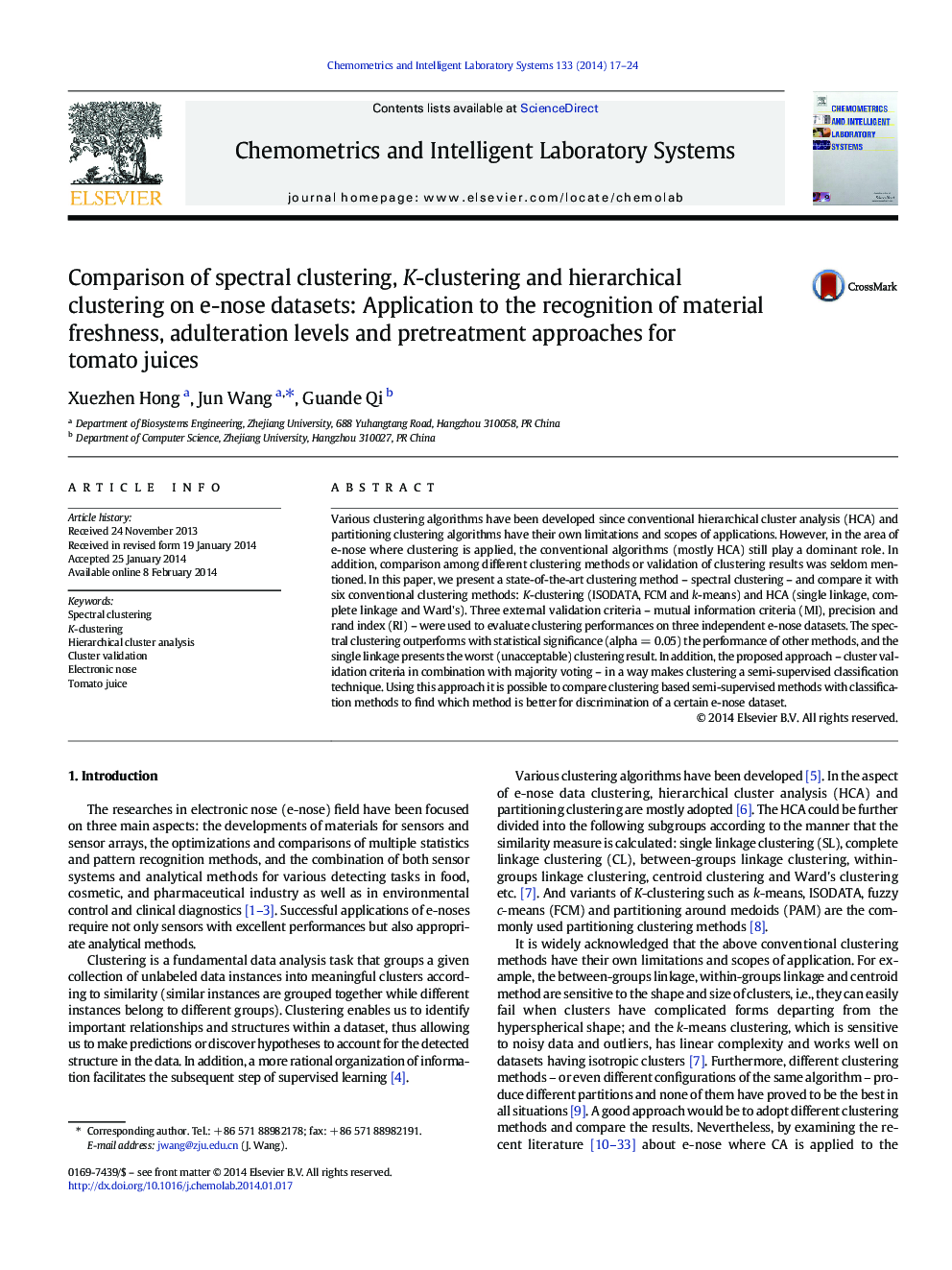| کد مقاله | کد نشریه | سال انتشار | مقاله انگلیسی | نسخه تمام متن |
|---|---|---|---|---|
| 1180903 | 1491545 | 2014 | 8 صفحه PDF | دانلود رایگان |
• We applied a novel clustering method – spectral clustering – for e-nose.
• We conducted three e-nose experiments, generating three independent datasets.
• We applied three cluster validation criteria to quantify clustering results.
• Spectral clustering outperformed K-clustering and hierarchical clustering.
Various clustering algorithms have been developed since conventional hierarchical cluster analysis (HCA) and partitioning clustering algorithms have their own limitations and scopes of applications. However, in the area of e-nose where clustering is applied, the conventional algorithms (mostly HCA) still play a dominant role. In addition, comparison among different clustering methods or validation of clustering results was seldom mentioned. In this paper, we present a state-of-the-art clustering method – spectral clustering – and compare it with six conventional clustering methods: K-clustering (ISODATA, FCM and k-means) and HCA (single linkage, complete linkage and Ward's). Three external validation criteria – mutual information criteria (MI), precision and rand index (RI) – were used to evaluate clustering performances on three independent e-nose datasets. The spectral clustering outperforms with statistical significance (alpha = 0.05) the performance of other methods, and the single linkage presents the worst (unacceptable) clustering result. In addition, the proposed approach – cluster validation criteria in combination with majority voting – in a way makes clustering a semi-supervised classification technique. Using this approach it is possible to compare clustering based semi-supervised methods with classification methods to find which method is better for discrimination of a certain e-nose dataset.
Journal: Chemometrics and Intelligent Laboratory Systems - Volume 133, 15 April 2014, Pages 17–24
